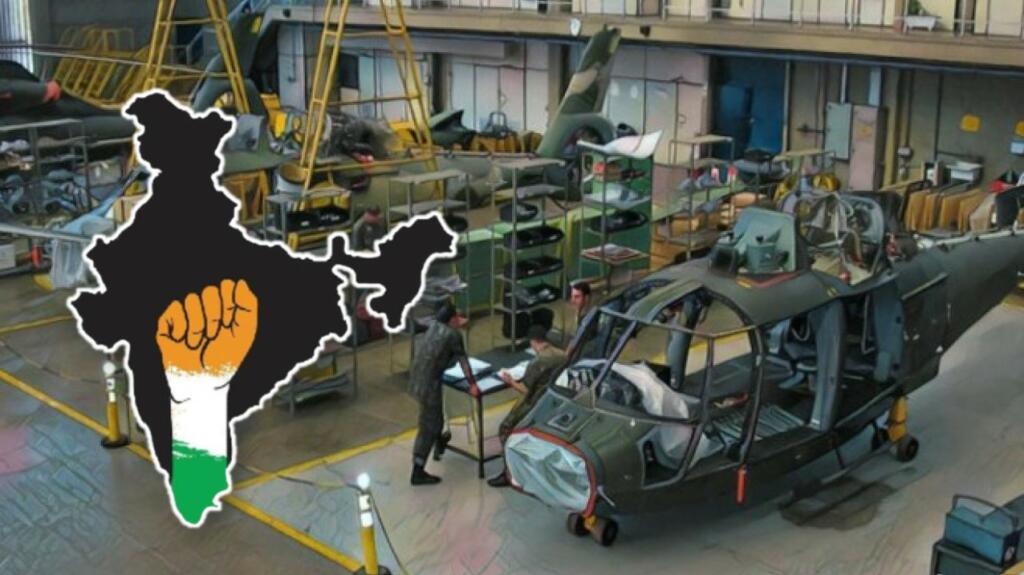- Indian Armed Forces has decided to shun the foreign-based communication equipment in favour of Indigenised
- The move should be welcomed, but India needs to do more to increase its indigenous capacity, especially in Defence
- Not just Defence, but areas like Semiconductor, communication equipment etc need a more nuanced and refined approach towards Aatmanirbharta
The Modi government is taking steps necessary to make the country Aatmanirbhar in many crucial areas including defence. The government is prioritizing the Made in India projects for acquisition, and not just that, it is financing the industry in areas where capacity is lacking.
Indian Forces won’t use foreign equipment for communication
Recently the Ministry of Defence accorded in-principle approval to four projects which are under Make-I (this is funded by the government) and five projects under Make-II (this is industry-funded) categories of Defence Acquisition Procedure (DAP) 2020.
The Indian Armed Forces will no longer use communication equipment purchased from foreign countries. Thus, the Indian air force gave the requirement for communication equipment like Switches, Routers, VoIP Phones and their software and Encryptors with Indian security protocols.
Read more: 7 Years of Make in India: What was dubbed as laughable back then is immensely successful today
Local industry will take time to mature
The defence equipment indigenisation drive is in full swing but there is still a long way to become Aatmanirbhar. A big percentage of India’s defence equipment needs are still imported because there is very little capacity in Indian industries. In other critical areas like pharmaceutical APIs, the country is still dependent on China for raw materials. The Chinese dependence is not going to go away easily given the lack of capacity at Indian firms.
For decades, India has been dependent on PSUs like HAL, DRDO, and Ordinance Factory Board (OFB) to meet its defence equipment needs. These companies, being PSUs, are inefficient by nature and have not learned much. Even in products where the equipment is imported from foreign companies and PSUs do only servicing and assembling, these companies have failed.
We will have to continue defence imports for a few more years
The Modi government has corporatized the Ordnance Factory Board (OFB) and is inducting professionalism and corporatization at many PSUs. However, even after these efforts, much cannot be expected from these companies. Therefore, many orders of defence procurement for the Indian Armed Forces are now going to private firms. These companies have a better learning curve but given the fact they are starting from scratch; it will take time for the country to become Aatmanirbhar in defence equipment.
Thus, imports will continue for a few more years. For example, in drones, the government put a blanket ban on the import of drones and drone equipment for all needs except defence. India needs very high-quality drones for defence needs and the Indian industry has not reached there yet.
Read more: India bans import of foreign-made drones
Government-Industry collaboration is needed
The indigenisation drive will take at least a decade to reach a level of capacity where at least half of defence needs can be met by Indian companies. The government should keep funding the Indian companies, especially the private ones, to ensure that they come on par with the foreign defence giants in a decade.
The industry is also coming forward to finance many projects under the Make-II scheme of the defence ministry. Five projects which will be funded by the industry under the Make-II procedure received AIP. The IAF Full Motion Simulator for Apache Helicopter; Wearable Robotic Equipment for Aircraft Maintenance; and the Full Motion Simulator for Chinook Helicopter have received AIP.
Read more: 40 C 295 will be manufactured in India, but not by HAL. It will be done privately
For the Indian Army one of the biggest projects that received the AIP is Autonomous Combat Vehicle; and Integrated Surveillance and Targeting System for Mechanised Forces.
India working on Aatmanirbharta in multiple sectors
The defence minister as well as the defence secretary, Rajnath Singh and Ajay Kumar respectively, are people committed towards Aatmanirbhar Bharat. India needs to become Aatmanirbhar in many areas like semiconductors, communication equipment, speciality steel and so on. The PLI scheme will help the industry to achieve capacity and scale in many of these areas.
The Indian government has thrown its weight behind the Indian private industry for the first time in many decades, and it is expected to start showing results in the next few years. Therefore, becoming Aatmanirbhar is still a long way to go and imports in critical areas will continue, but the government has taken baby steps.
